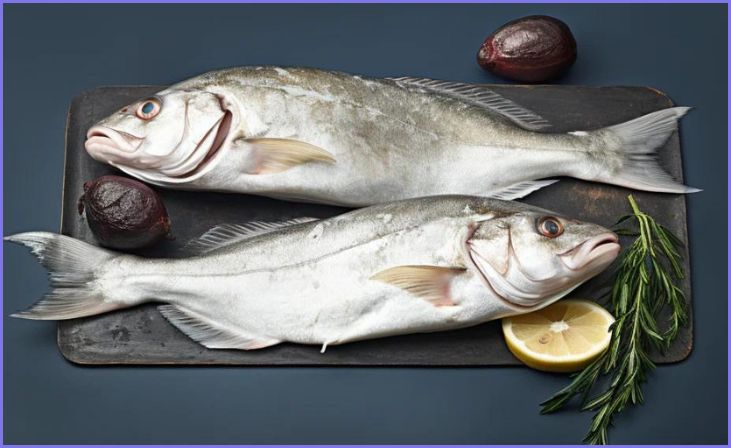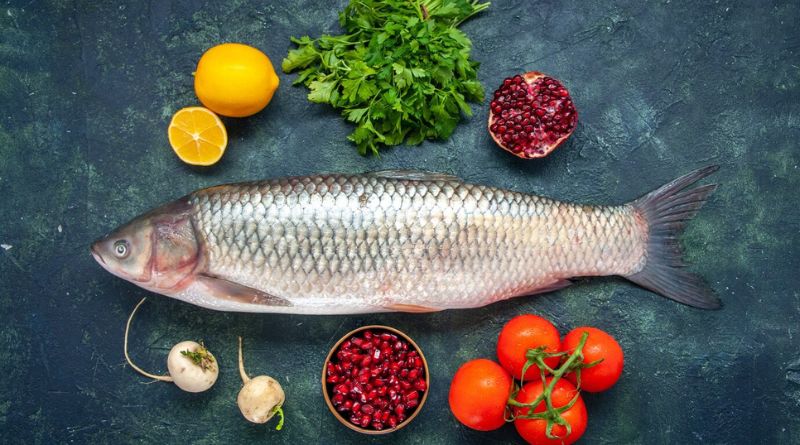Best Types of Fish to Eat – Incorporating fish into one’s diet is a cornerstone of a healthy lifestyle, providing a wealth of essential nutrients and contributing to overall well-being. Not only are fish a rich source of high-quality proteins, but they also boast omega-3 fatty acids, which play a pivotal role in promoting heart health. As consumers seek to make informed dietary choices, it becomes crucial to identify the best types of fish.
This guide will explore criteria such as omega-3 content, low mercury levels, and sustainable fishing practices, offering insights into optimal choices. From the delectable richness of salmon to the versatility of tilapia, this outline will delve into various fish options, emphasizing both nutritional benefits and environmentally conscious selections. As we navigate the seas of dietary choices, understanding the significance of each fish type contributes to a well-balanced, health-conscious approach to eating.
Importance of including fish in a balanced diet
Incorporating fish into a balanced diet holds immense significance for overall health and well-being. Fish is a nutritional powerhouse, offering a myriad of benefits that contribute to a holistic approach to wellness. First and foremost, fish is an exceptional source of high-quality protein, essential for the repair and growth of tissues within the body.
Perhaps most notable is the presence of omega-3 fatty acids in many fish varieties, such as salmon and mackerel. These fatty acids are renowned for their role in supporting cardiovascular health by reducing the risk of heart disease, lowering blood pressure, and promoting healthy cholesterol levels. Additionally, omega-3s are crucial for brain health, aiding cognitive function and potentially reducing the risk of neurodegenerative conditions.
Fish is also rich in vitamins and minerals, including vitamin D, iodine, selenium, and various B vitamins. These nutrients play vital roles in bone health, thyroid function, immune system support, and energy metabolism.
Furthermore, incorporating fish into a balanced diet has been associated with a decreased risk of chronic diseases such as diabetes and certain types of cancers. Its nutrient density, coupled with the potential anti-inflammatory effects of omega-3s, underscores the importance of including fish as a regular dietary component.
Also, Read – Health Advantages of Pine Nuts
Best Types of Fish to Eat
Salmon

Salmon, rich in omega-3 fatty acids, offers a delicious and nutritious option. Its distinct flavor and versatility make it a popular choice. Beyond its culinary appeal, salmon provides essential nutrients, contributing to heart health.
With omega-3s linked to numerous benefits, including brain function and inflammation reduction, salmon stands out as a valuable addition to a balanced diet. Whether grilled, baked, or smoked, salmon’s versatility makes it a favorite for those seeking both taste and health benefits.
Mackerel
Mackerel, a flavorful oily fish, is a nutritional powerhouse with a distinctive taste. Packed with omega-3 fatty acids, it supports heart health and provides a good dose of vitamin D. Mackerel’s rich flavor profile enhances various culinary dishes, and its smaller size often makes it more sustainable.
Canned mackerel is a convenient option for incorporating this nutrient-dense fish into your diet. Due to its omega-3 content, mackerel is valued for its potential to reduce inflammation and promote overall well-being. Considered a delicious and healthful choice, mackerel is a standout option for those looking to enhance their seafood selection.
Sardines
Sardines, small yet mighty, are a nutritional powerhouse in the world of seafood. Packed with omega-3 fatty acids, calcium, and vitamin D, these little fish offer significant health benefits. Sardines’ rich flavor adds depth to various dishes, and their canned form provides convenience.
Known for their sustainable status, sardines are an eco-friendly choice, contributing to responsible fishing practices.
The abundance of nutrients in sardines supports bone health, heart function, and overall well-being. Easily incorporated into salads, pastas, or enjoyed straight from the tin, sardines are a delicious and nutritious addition to any diet.
Also, Read – Deliciously Cheesy Veggie Side Dishes
Trout
Trout, both delicious and nutritious, is a freshwater fish celebrated for its tender flesh and mild flavor. Rich in omega-3 fatty acids, it promotes heart health and offers a good source of protein.
Whether grilled, baked, or pan-fried, trout’s versatility makes it a favorite among culinary enthusiasts. This fish also provides essential nutrients like vitamin B12 and selenium.
With its delicate texture and ability to absorb flavors, trout lends itself well to various cooking styles and accompaniments. Whether enjoyed as a whole fillet or incorporated into salads and dishes, trout stands out as a flavorful and health-conscious choice for seafood enthusiasts.
Tuna

Tuna, a popular and versatile fish, is prized for its meaty texture and distinct flavor. Whether in salads, sandwiches, or sushi, tuna’s adaptability in various cuisines is widely appreciated. Rich in protein and omega-3 fatty acids, it promotes muscle health and supports cardiovascular well-being.
However, be mindful of mercury levels, especially in larger tuna species. Opt for skipjack or albacore tuna and enjoy its nutritional benefits without compromising on taste.
Tuna’s convenience in canned form also makes it a pantry staple. Balancing flavor and health benefits, tuna remains a go-to choice for those seeking a quick, protein-packed addition to their meals.
Cod
Cod, a mild and flaky white fish, is a culinary favorite known for its versatility. With a delicate flavor and firm texture, cod lends itself well to various cooking methods, from baking and grilling to pan-frying.
This lean fish is a good source of high-quality protein and essential nutrients, making it a healthy addition to a balanced diet. Cod’s mild taste also makes it a versatile option for different seasoning and flavor profiles.
Whether enjoyed in fish tacos, fish and chips, or as a simple fillet, cod remains a popular choice for those seeking a light and nutritious seafood option.
Halibut
Halibut, a lean and firm-fleshed fish, is celebrated for its mild, sweet flavor and versatile culinary appeal. Rich in protein and low in fat, halibut is a nutritious choice for those seeking a heart-healthy protein source.
Whether grilled, baked, or pan-seared, halibut’s thick fillets hold up well to various cooking methods. As a white fish, it provides a neutral canvas for different seasonings and sauces, making it a favorite among chefs and home cooks alike.
With its delicate taste and flaky texture, halibut stands out as a delicious and wholesome option for seafood enthusiasts looking to savor a light and satisfying meal.
Mahi-Mahi
Mahi-Mahi, with its firm texture and mild, sweet flavor, is a popular choice in seafood cuisine. Also known as dolphinfish or dorado, it offers a lean source of protein with a low fat content. Mahi-Mahi’s versatility in the kitchen is evident, as it can be grilled, baked, or pan-seared to perfection.
Rich in vitamins, minerals, and omega-3 fatty acids, it contributes to a well-rounded and nutritious diet. Its vibrant appearance and succulent taste make Mahi-Mahi a favorite for seafood enthusiasts seeking a delightful and health-conscious dining experience. Considered a sustainable option, it aligns with conscientious choices for both taste and the environment.
Haddock

Haddock, a mild and flaky white fish, is renowned for its delicate taste and versatility in the kitchen. With a firm texture, it adapts well to various cooking methods, including baking, frying, and grilling. As a lean source of protein, haddock is a nutritious option for those seeking a health-conscious seafood choice.
Its mild flavor makes it a versatile ingredient, complementing a range of seasonings and culinary styles. Often used in classic dishes like fish and chips, haddock’s popularity lies in its ability to provide a satisfying and wholesome seafood experience. Considered a sustainable choice, haddock meets both culinary and environmental considerations for conscientious consumers.
Alaskan Pollock
Alaskan Pollock, a mild and flaky white fish, is a versatile and sustainable option in the seafood realm. Known for its neutral taste, it easily adapts to various cooking methods like baking, grilling, or frying.
With a lean profile, Alaskan Pollock is a healthy source of protein, making it a nutritious addition to meals. Widely used in fish sticks and fillets, it offers a satisfying texture and mild flavor that appeals to a broad audience.
As a responsibly harvested fish, Alaskan Pollock aligns with environmentally conscious choices, providing a delicious and eco-friendly alternative for those seeking a wholesome seafood option.
Conclusion
In conclusion, integrating fish into your diet is a wise and health-conscious choice. Packed with high-quality proteins, omega-3 fatty acids, and essential nutrients, fish promotes cardiovascular health, supports brain function, and reduces the risk of chronic diseases.
By making informed choices, prioritizing sustainable options, and enjoying a variety of fish, you not only enhance your well-being but also contribute to a balanced and environmentally conscious approach to nutrition. Embrace the benefits of fish, and let your dietary choices navigate you toward a path of long-term health and vitality.
FAQs
Optimal choices include fish high in omega-3s (e.g., salmon), low in mercury (e.g., tilapia), and sourced sustainably. These factors ensure nutritional benefits while minimizing environmental impact.
Fatty fish like salmon, mackerel, and sardines are excellent sources of omega-3s, promoting cardiovascular health and overall well-being.
Choose fish from well-managed sources, look for eco-certifications, and be aware of overfishing concerns. This helps support sustainable fishing practices and preserves marine ecosystems.







